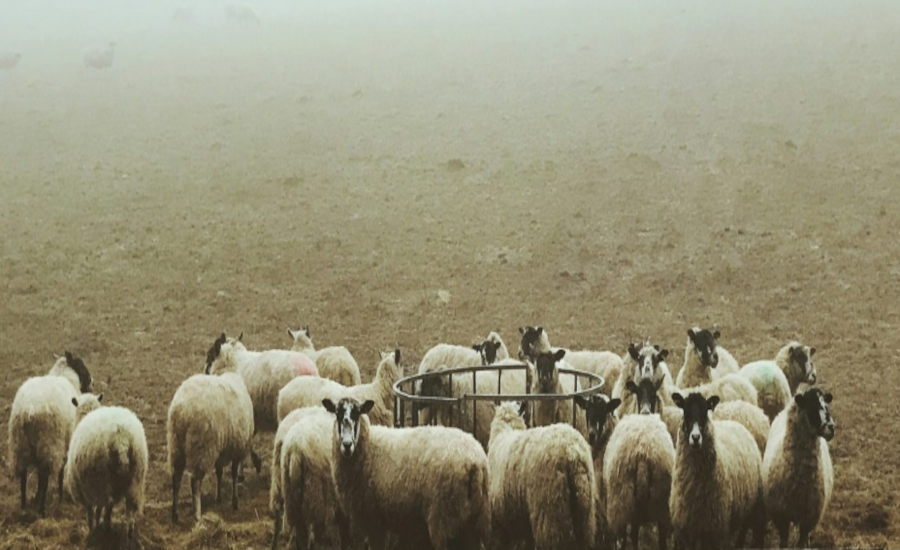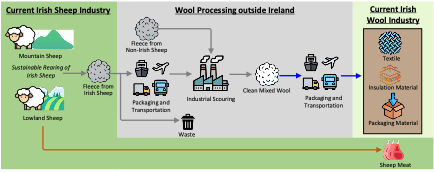Regenerative Value Systems for Irish Grown Wool in Ireland (REVEIRE)

Connecting low-impact food production with sustainable textiles or biobased materials, “creating value beyond the net zero goal of doing no harm” in a regenerative value system will be a true success story of a sustainable circular bioeconomy. Up until the turn of the 20th century, Ireland’s sheep not only produced meat, but supported widespread production of wool, a sustainable and biobased fibre in woollen mills. However, with the rise in synthetic textiles and lack of demand of woollen fibres worldwide, the industry declined, so did the appreciation and value of wool. Ireland produces in the region of 7 million kilogrammes of wool from approximately 4 million sheep (35,000 flocks). However, wool in Ireland and, in fact, in the EU, is of very little value and is categorised as a Category 3 (low risk) waste material arising as animal by-product from sheep meat production. Due to the fall in wool prices and current lack of demand in markets for Irish grown wool (coarser wool with higher micron count), it has become challenging for Irish sheep farmers, particularly hill sheep farmers. While the cost of shearing is approximately 80 c€/kg of wool, anecdotal evidence suggests that farmers often get as little as 5c€/ kg of fleece; some farmers have reportedly not sold wool in four years (due to cost and lack of market). Wool merchants who purchase the fleece based on market demands, send wool to the UK for cleaning (scouring) before further use (Figure 1) since there is no commercial scouring facility on the island of Ireland. The cost of buying back the cleaned wool is more than 15-fold higher, at over €3/kg (not accounting for the c. 30% wool lost during the entire process). Industrial scouring also means that the returned clean wool may contain other wool varieties and currently cannot be termed ‘Irish Grown Wool’.
The 2022 Wool Feasibility Study, Review of Market Opportunities for Irish-Grown Wool based Products, funded by the Department of Agriculture, Food and the Marine (DAFM emphasises how sheep wool is perfectly placed to contribute to the increased interest and need for natural and sustainable fibres worldwide. Irish wool is typically characterised as ‘strong wool’, in that its diameter is typically greater than 30 microns (μm) and is generally more suited to applications in woollen-wear and as carpets, filled products and rugs. The 2022 Wool Feasibility study identified further applications of Irish grown wool in construction (insulation, building blocks), packaging (insulated filler material), environmental (oil sorbent), and high-value products (lanolin, keratin, ceramides). While there has been an increase in the number of projects looking improving the value of Irish wool and developing innovative products from wool, they do not address a major challenge of the wool value chain in Ireland, which includes a lack of information and validation of the front-end environmental, social and economic impact of the Irish grown wool.
